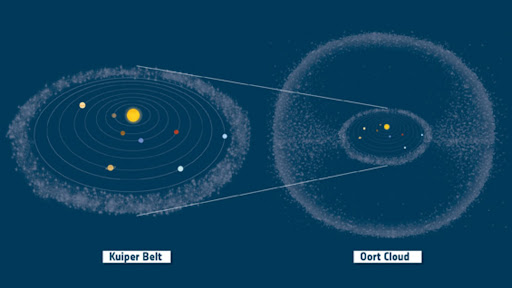The Oort Cloud is a vast, spherical shell of icy objects that surrounds our Solar System. It’s a relic of the early Solar System, a time when the Sun and its planets were forming.
A Celestial Ice Box
The Oort Cloud is thought to extend from about 2,000 to 100,000 astronomical units (AU) from the Sun. One astronomical unit is the average distance between the Earth and the Sun, about 93 million miles. This means the Oort Cloud is incredibly distant, far beyond the Kuiper Belt.
The Source of Long-Period Comets
The Oort Cloud is the source of long-period comets. These comets take thousands of years to orbit the Sun. As they approach the inner Solar System, they are warmed by the Sun’s radiation, causing their icy surfaces to sublimate and form a spectacular tail.
The Formation of the Oort Cloud
The Oort Cloud is believed to have formed during the early stages of the Solar System’s formation. As the Sun and planets formed, gravitational interactions scattered icy planetesimals, sending them into distant orbits. These icy bodies now make up the Oort Cloud.
Exploring the Oort Cloud
Directly observing objects in the Oort Cloud is extremely challenging due to their immense distance. However, astronomers can study long-period comets that originate from the Oort Cloud to gain insights into its composition and structure.
Future space missions may be able to explore the outer reaches of the Solar System and potentially encounter objects from the Oort Cloud. These missions could provide valuable data on the formation and evolution of our Solar System.
The Oort Cloud is a fascinating and mysterious region of space. Its icy objects hold clues to the early history of our Solar System. As we continue to explore the cosmos, the Oort Cloud will remain a captivating subject of scientific inquiry.
Would you like to delve deeper into a specific aspect of the Oort Cloud, such as its formation, the comets it produces, or the challenges of exploring it?
